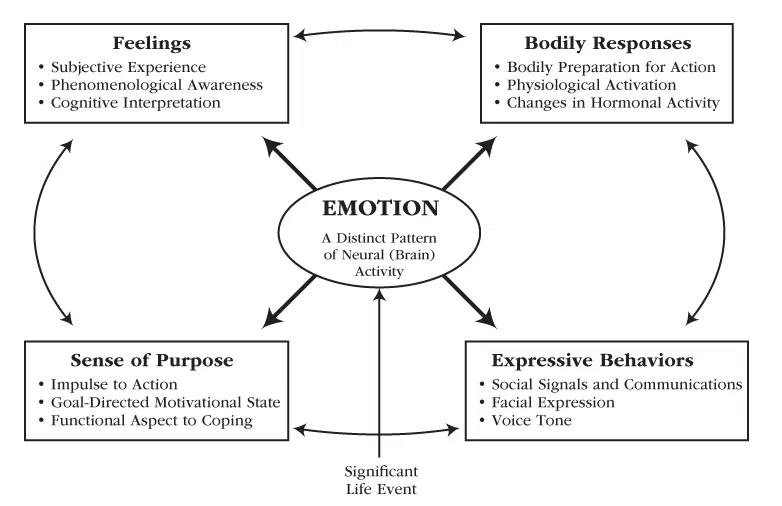MOTIVATION & WELLBEING - Psychology
1/18
There's no tags or description
Looks like no tags are added yet.
Name | Mastery | Learn | Test | Matching | Spaced |
|---|
No study sessions yet.
19 Terms
Motivation
The driving force(s) responsible for the initiation, persistence, direction, and strength of goal-directed behaviour.
Sources of Motivation
Physiological
Cognitions
Emotions
Social
Physiological Motivation
Comes from uncontrollable urges, relative to homeostatic regulation of bodily physiological functions. E.g. control of temperature, pain level, food/drink intake and sleep.
Cognitive Motivation
Refer to mental events, such as thoughts, beliefs, expectations, plans, goals, strategies and self-concept. Motivation involves the person’s way of thinking. E.g. as students engage in a task, they have in mind some plan or goal, they harbor expectations that they will cope well.

Emotional Motivation
Are considered motivational states because they generate bursts of energy that get our attention and cause our reactions to significant events in our lives. Emotions generate an impulse to cope with the circumstances at hand. Together with emotion, motivation is part of a core psychology phenomenon referred to as affect (feelings, bodily responses, sense of purpose and expressive behaviours)
Social Motivation
Humans need meaningful social contact, and the motivation for such contact is crucial to the maintenance of a healthy sense of adjustment and a sense of identity. Any threat to this basic human need to form and maintain interpersonal relationships can have serious negative psychological consequences.
Who were the theorists and what year was Self Determination Theory created?
Deci and Ryan (1985)
What are the innate psychological needs that drive human motivation?
Autonomy
Competence
Relatedness
What happens when these needs are met/not met?
When these needs are met → Intrinsic motivation → better well-being, creativity, and performance.
When these needs aren’t met → extrinsic motivation → lower well-being, reduced creativity, and poorer outcomes.
Motivation according to SDT
Continuum ranging from “non-self-determined to self-determined”
Extrinsic Motivation
a drive to behave in certain ways based on external sources and it results in external rewards. Sources include grading systems, employee evaluations, awards & accolades, and the respect & admiration of others.
Intrinsic motivation
comes from within. These are internal drives that inspire us to behave in certain ways, including our core values, our interests, and our personal sense of morality.
Amotivation
is when an individual is completely non-autonomous, has no drive to speak of, and is struggling to have any of their needs met.
Psychological needs for motivation
Both intrinsic and extrinsic motivation are highly influential determinants of our behaviour, and both drive us to meet the three basic needs identified by the SDT model.
Autonomy
People have a need to feel that they are the masters of their own destiny and that they have at least some control over their lives; most importantly, people have a need to feel that they are in control of their own behaviour.
Competence
Another need concerns our achievements, knowledge, and skills; people have a need to build their competence and develop mastery over tasks that are important to them.
Relatedness (connection)
People need to have a sense of belonging and connectedness with others; each of us needs other people to some degree (Deci & Ryan, 2008).
Strengths of SDT
Extensively researched with robust evidence across multiple domains
Studies consistently show autonomy – supportive environments lead to higher well – being, life satisfaction, and positive emotions compared to controlling environments.
Research demonstrates that intrinsically motivated individuals show greater persistence and better performance than those with extrinsic motivation.
Limitations of SDT
Deci and Ryan (2000) note that SDT might not be able to identify the individual differences in the basic psychological needs.
SDT research does not focus on adolescents.